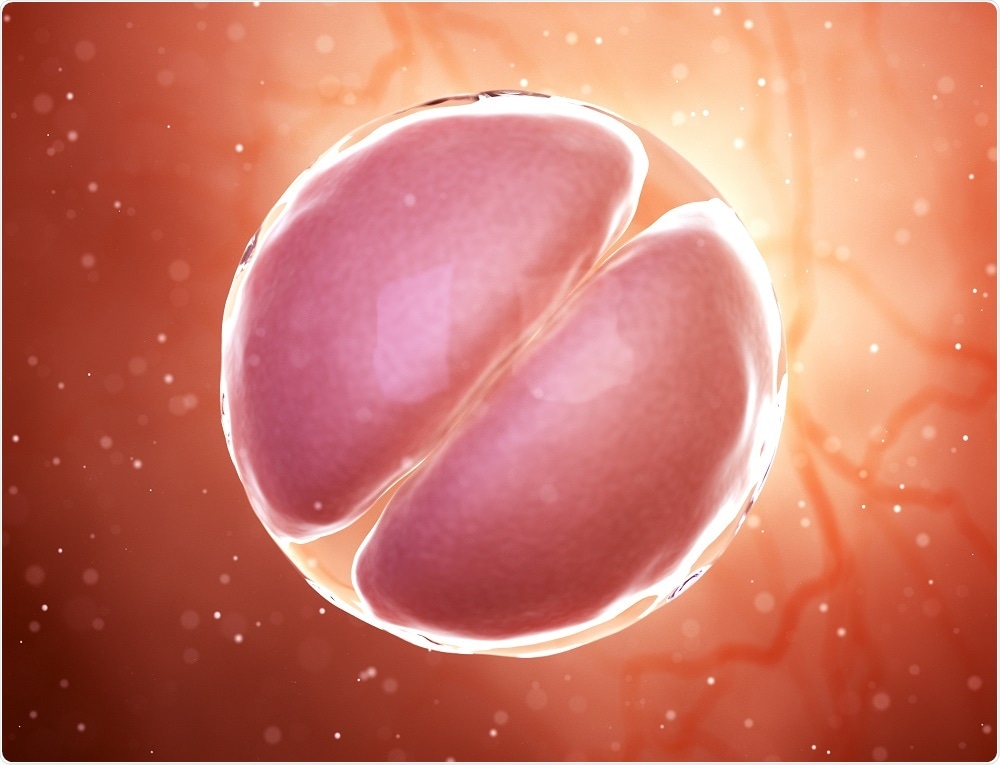In a complicated and ethically challenging procedure, Chinese researchers were able to produce healthy mouse pups with two mothers.
 Image Credit: Sebastian Kaulitzki / Shutterstock
Image Credit: Sebastian Kaulitzki / Shutterstock
The study, titled Generation of Bimaternal and Bipaternal Mice from Hypomethylated Haploid ESCs with Imprinting Region Deletions, was published on October 11 in the journal Cell Stem Cell.
The research reveals some crucial obstacles that normally prevent sexual reproduction between parent animals of the same sex, while indicating that some of them, at least, may be bypassed using stem cells and targeted gene editing.
Mammals are known for being able to reproduce only when two parents of different sexes mate, even when artificial reproduction technology is used to achieve fertilization.
The core issue is a mechanism called genomic imprinting that does not occur in most reptiles, amphibians and fish.
Genomic imprinting simply refers to the suppression of selected genes, from either the mother or the father, during the development of the germ cells (sperm and egg cells) that pass on genetic information during reproduction.
This phenomenon in mammals leads to the absence of certain vital genetic regions in offspring which do not receive genes from both a male and a female parent.
This in turn results in abnormally developed or unviable offspring.
One key to overcoming this mechanism is deleting imprinted genes from ova or egg cells which have not yet reached maturity.
This early approach led to the production of bimaternal mice (mice born of two mothers) in a previous study.
The problem was that these pups showed some genetic defects, and the process was extremely hard to replicate.
The current study successfully produced healthy bimaternal pups by making use of haploid embryonic stem cells (ESCs).
These cells are produced by one parent and contain only half the number of chromosomes and half the amount of DNA present in the parent organism.
In this study, stem cells from a female mouse underwent genetic editing, in which three imprinting regions were deleted. They were then injected into egg cells from a second female mouse.
The procedure generated 210 embryos, of which 29 survived to be born as healthy, normally developed mouse pups. They survived to become adults and produced their own progeny.
The haploid ESCs are seen as being essential for the success of this work, because much less imprinting has occurred at this stage, which means both paternal and maternal genes are expressed in the genome.
As co-senior author Baoyang Hu says, they resembled primordial germ cells rather than more mature imprinted gametes.
Bipaternal mouse pups have also been produced. Using a protocol similar to the first, but more complex, 12 live mice were born at full term. In this case, seven important genetic imprinting regions were deleted from the haploid ESCs.
The edited cells were then injected along with sperm from another male mouse into an egg cell from which the nucleus had been removed.
The resulting embryo thus carried only paternal genomic DNA from two male mice.
The final step involved the transfer of the embryo along with some placental material into surrogate mothers, who maintained the pregnancies to full term.
Sadly, the pups died 48 hours after birth. However, it is hoped that with further refinement, scientists will be able to produce pups that reach adulthood.
The technology will require a lot of improvement, however, before it comes into more common use, as we have not yet identified all of the imprinted genes and there are numerous ethical issues with creating a vast number of unviable or severely defective offspring.
This research shows us what's possible. We saw that the defects in bimaternal mice can be eliminated and that bipaternal reproduction barriers in mammals can also be crossed through imprinting modification.
We also revealed some of the most important imprinted regions that hinder the development of mice with same sex parents, which are also interesting for studying genomic imprinting and animal cloning."
Wei Li, Co-Senior Author